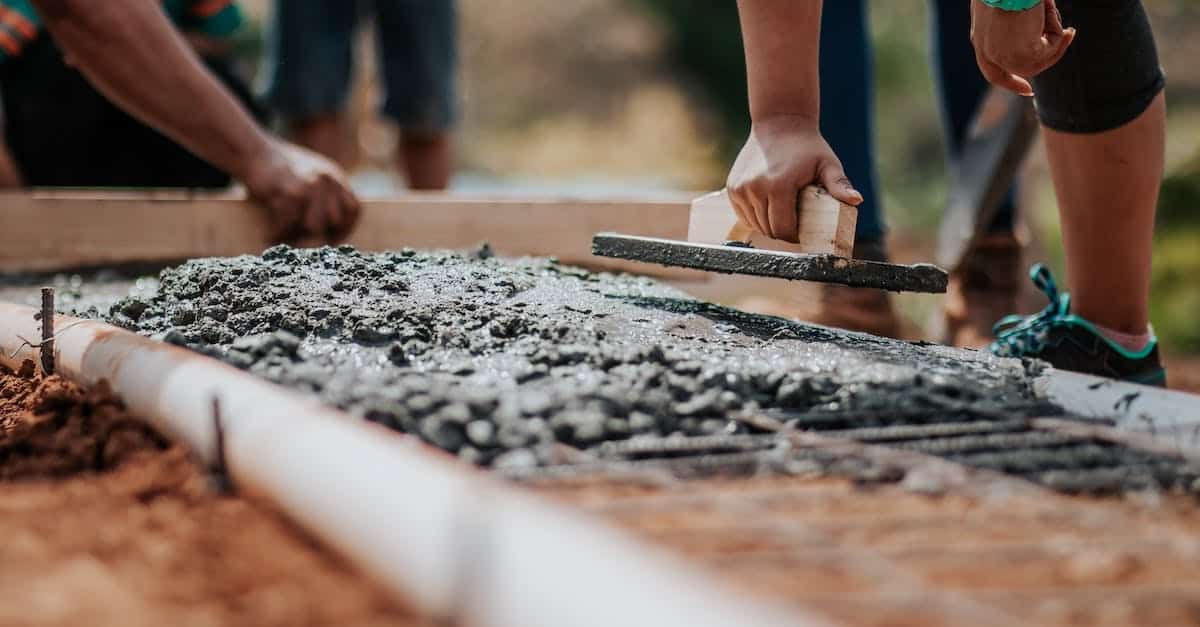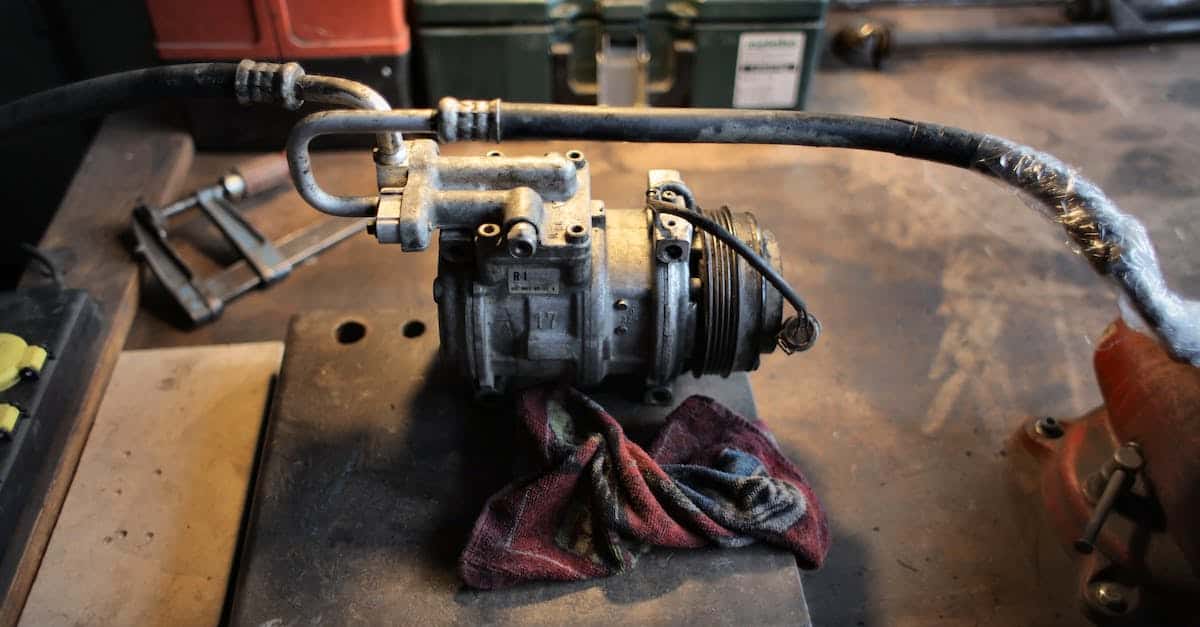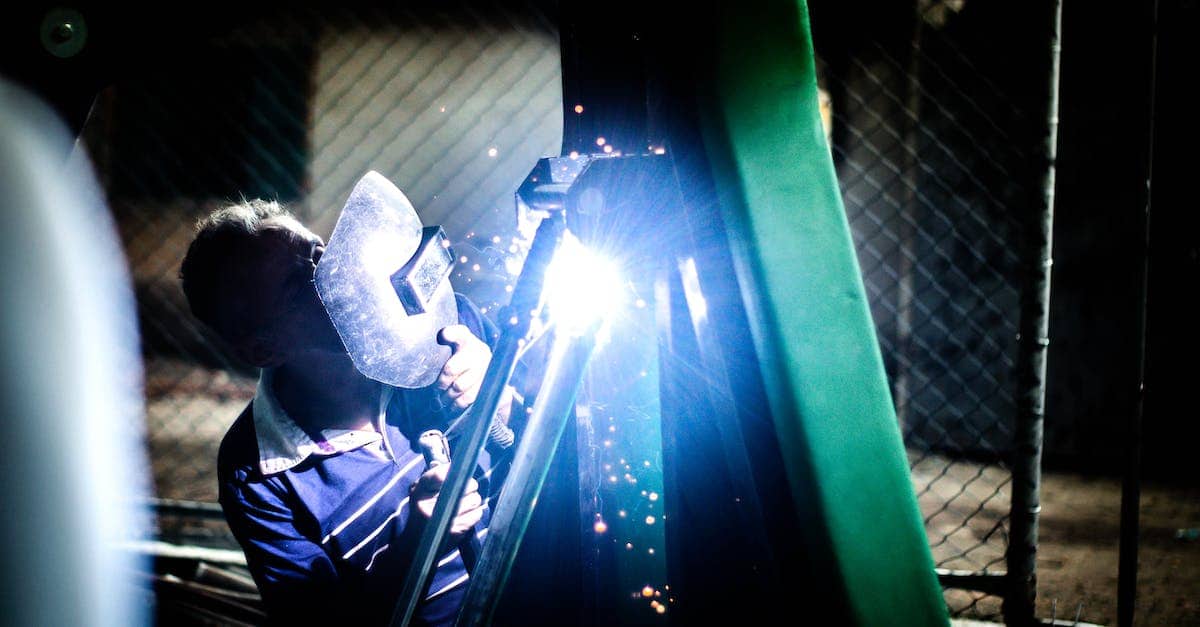Choosing the right wood for your tabletop isn’t just about style—it’s about finding the perfect balance of durability, aesthetics, and budget. With so many options out there, it’s easy to feel overwhelmed.
In this article, you’ll discover the top contenders for the best wood for your tabletop needs. From the classic elegance of hardwoods like oak and maple to the rustic charm of softwoods like pine, you’re about to find out which wood will best bring your project to life.
Get ready to dive into a world of grains, finishes, and textures as we explore the best wood choices that will make your tabletop truly stand out. Whether you’re crafting a dining table or a desk, you’ll be well-equipped to make an informed decision.
Hardwood vs Softwood: What’s the Difference?
You’re standing in the lumber aisle, your gaze sweeping over the vast array of wood types before you. It’s time to dive deeper into the characteristics that set hardwoods apart from softwoods—a distinction that’s not just about the density but also botanical lineage.
Hardwoods are the lumberjack’s gems, hailing from deciduous trees that lose their leaves annually. Think oak, maple, and cherry—the stalwarts of furniture making. Their growth takes its sweet time, and the patience pays off with dense, strong fibers that can handle the daily rigors of life. Perfect for tabletops, these woods take to carving like a dream and withstand nicks and moisture better than their softwood counterparts.
On the flip side, don’t let the name “softwood” fool you; it’s not always about the soft touch. Softwoods come from coniferous trees, the evergreens that keep their needles year-round, like pine, cedar, and fir. They grow faster and are generally more cost-effective, but it’s not all about saving a penny. The higher sap content in some softwoods delivers an inherent resistance to rot—ideal for patio furniture that braves the elements.
The ring of your saw cutting through hardwood is almost a melody, a symphony of craftsmanship as you shape and craft your design. Whereas softwoods often lend themselves to quicker projects, where a softer grain and easier manipulation are your allies. But remember, it’s the application that matters.
So, consider the everyday duties your tabletop will face. Will it bear the brunt of kids’ homework and dinner spills? Or maybe it’ll host your morning coffee and laptop in a quiet corner. The balance between durability and aesthetic has never been so critical. Each wood’s unique texture, grain, and ability to take finishes varies, adding another layer to your decision-making process.
When you select your wood, think beyond today—envision the scratches and scars that’ll tell stories tomorrow. Your tabletop isn’t just a piece of furniture; it’s a canvas for memory, a testament to quality, prepared to be part of your home’s narrative.
The Classic Elegance of Oak
When you’re crafting a tabletop, the allure of oak is undeniable. Imagine the heft and presence of a solid oak dining table, a piece that commands attention in any room. It’s not just another wood; oak symbolizes strength and longevity. This revered material has been a staple in furniture-making for centuries, and for good reason.
Working with oak, you’ll notice its distinct open grain texture, which adds character and depth to your piece. Its reputation for toughness isn’t just talk; oak tables withstand the wear and tear of daily life, making them a practical option for families or any space that sees frequent use. Whether you’re enjoying a family dinner or hosting a game night, an oak tabletop holds up beautifully.
But it’s not just about durability. Oak’s natural beauty is versatile, complementing traditional and modern designs alike. Its warm tones range from the pale gold of white oak to the richer reds and browns of red oak. Moreover, oak takes to stains well, so you’re able to customize the shade to match your vision perfectly. Consider how a deep espresso stain can turn an oak tabletop into a statement piece or a light whitewash can give it a rustic, airy feel.
Remember, as you dive into your project, to pay attention to the origin of the oak. European oak tends to have a more intricate grain pattern than American varieties, so think about the final look you’re aiming for. And while oak is notably hard, it’s still workable. You’ll find joy in the process of sawing, chiseling, and sanding this noble wood into your envisioned tabletop.
Oak’s timeless appeal makes it a top choice for anyone looking to create a tabletop that’s not merely a surface but a centerpiece. Whether it’s the focal point of a dining room or a functional desk, an oak tabletop can elevate any space with its elegance and charm. Keep in mind the room’s decor and intended use as these elements will guide your design decisions, ensuring that your oak table is both a durable and stylish addition to your home.
The Timeless Beauty of Maple
When you’ve been in the woodworking game as long as you have, you come to appreciate certain materials that stand the test of time. And among those, maple is undoubtedly a showstopper for crafting tabletops. Its fine, uniform texture, along with its impressive durability, makes it a favorite.
You’ve probably noticed that maple has a subtly elegant grain pattern that just seems to glow when the finish is applied. It’s this luminous quality that can transform your project, giving it that air of quiet sophistication. Whether you’re leaning toward a contemporary design or a more traditional look, maple’s versatility shines through. You can stain it to complement a wide range of decor styles, although it’s often celebrated for its gorgeous natural color.
Let’s talk toughness, shall we? Maple is renowned for its hard-wearing surfaces. This hardwood can take a beating from daily uses such as dining, working, or even the occasional crafting project that sprawls across the table. If you’re planning a piece that’ll see lots of action, maple is a steadfast choice – it’s no wonder it’s often used for heavy-use items like bowling alleys and basketball courts.
And while it’s hard, don’t think for a second that maple isn’t workable. In your own hands, with the right tools, you can shape and craft it into a masterpiece of a tabletop. Just remember to prep your blades – maple is known to dull them quicker than softer woods.
Here’s something else for you to consider: the sustainability of your material. Maple, especially from North American sources, is often harvested following sustainable forestry practices, which means you can feel good about the environmental impact of your project.
- Subtle grain pattern
- Glows with finish
- Versatile in design
- Hard-wearing surface
- Sustainable option
As you craft your maple tabletop, don’t forget to pay homage to the tree itself. Savor the process of transforming this raw, sturdy material into a piece of furniture that could very well become a treasured heirloom. With every cut and sand, you’re not just building a table – you’re creating a story that starts with nature and ends with your craftsmanship.
Durability and Character: Walnut
When you’re on the lookout for wood that truly stands the test of time, walnut emerges as an outstanding contender. Known for its remarkable durability, walnut is one of those woods that just gets better with age. Its tight grain withstands dents and scratches, ensuring your tabletop remains the centerpiece of your space for years to come.
The real charm of walnut lies in its rich, chocolate hues that carry an inherent warmth and depth. Each piece tells its own story, with diverse grain patterns that range from straight to wildly figured waves. This character adds a unique touch to your projects, making no two walnut tabletops identical.
It’s not just the aesthetic appeal that makes walnut a great choice. This wood’s stability is a major asset for any craftsman. Whether you’re a seasoned woodworker or just starting out, you’d appreciate the way walnut maintains its form, resisting warping and shrinkage. It’s a wood that respects your craftsmanship, rewarding you with a piece that stays true to its shape and style.
Walnut isn’t merely a showpiece; it’s a wood that offers versatility in application. It’s not uncommon for walnut to be used in everything from cutting boards to grand dining tables. Its ability to elegantly mingle with various finishes and metals means you can craft a tabletop that’s both resilient and aesthetically pleasing.
Remember to honor the wood’s history and handle it with care. When walnut is sourced responsibly, it stands as a testament to sustainable woodworking practices. As you work the wood, shaping and sanding it, you’re not only creating furniture but also perpetuating the legacy of this magnificent material.
Going Green: Bamboo
As you dive into your next project, considering the environmental impact of your materials is as essential as the design itself. Bamboo might not be your first thought when it comes to traditional woodworking, but it’s a choice that’s gaining ground for its eco-friendliness and contemporary flair.
Bamboo isn’t actually a wood—it’s a grass, and it’s one of the fastest-growing plants on Earth, reaching maturity in just 3 to 5 years. This rapid growth makes bamboo highly renewable, giving you peace of mind that your project is as kind to the Earth as it is to your eyes.
While you might question its durability compared to your beloved walnut, bamboo has a surprise in store. It’s astonishingly robust, often compared to hardwood in terms of strength, and you’ll find it has a natural resistance to moisture and insects. With a tensile strength similar to steel, it’s a powerhouse in a lightweight, versatile package.
Here’s how bamboo stacks up:
| Property | Bamboo | Common Hardwoods |
|---|---|---|
| Growth rate | 3-5 years | 20-120 years |
| Renewable | Yes | Yes, but slower |
| Tensile Strength | Similar to steel | Varies |
| Eco-Friendly | Highly | Moderate |
Its sleek appearance, with a distinctive linear grain, can be curated to a variety of finishes, from the warmth of caramelized tones to the natural, creamy hues of untreated bamboo. Crafting a tabletop from bamboo gives your space a modern edge while signaling your commitment to sustainability.
Incorporating bamboo into your DIY projects is easier than you might think. It works well with the same tools you use for traditional woods, though you’ll want to keep your blades sharp as bamboo can be tough on edges. Plus, it’s a talking point—how often does your choice of material spark a conversation about innovation and environmental responsibility?
Bamboo’s rise in popularity isn’t just a trend, it reflects a growing consciousness among woodworkers about the sources of their materials. When you choose bamboo for your tabletop, you’re not just crafting a surface to dine on—you’re wielding your influence as an artisan to shape a greener future for the craft you love.
The Rustic Charm of Pine
When you’re on the hunt for that perfect tabletop with a rustic vibe, don’t overlook pine. This softwood may not boast the same hardness as bamboo, but it’s got its own set of virtues that make it a favorite among DIY enthusiasts and professional woodworkers alike.
First off, pine exudes a warm and inviting look that instantly makes a space feel cozy. Its natural knots and grains lend a character to furniture that’s often lacking in more uniform woods. Pine is widely available and generally more affordable than hardwoods, which means you can undertake larger projects without breaking the bank.
Let’s talk durability. Pine is surprisingly resilient for a softwood, and when treated properly, it can withstand the wear and tear of everyday use. Here’s what you need to know about keeping your pine tabletop in top shape:
- Regular Maintenance: Dust regularly and quickly clean up any spills.
- Finishing: A good finish not only enhances the appearance of pine but also provides a protective layer.
- Careful Use: Although durable, pine is soft so it’s best to avoid heavy objects or sharp tools that might cause dents or scratches.
Aside from its practical benefits, pine also offers ease of workability. You can easily cut, shape, and sand pine with basic woodworking tools you’ve got in your garage workshop. And if you’re one to appreciate the process of creating as much as the final product, you’ll enjoy the fact that pine’s workability allows for customization. Stains and paints take well to its surface, letting you tailor its appearance to your exact specifications.
Understandably, pine may not be the go-to for every project, especially if you’re after a wood type to match bamboo’s strength. But it’s undeniable that pine brings a certain charm and warmth that can transform your living space, making it feel like a home rather than just a house. Opting for pine reflects an appreciation for the natural imperfections that make each piece unique – a trait highly coveted in today’s mass-produced world.
Balancing Aesthetics and Budget: Plywood
When it comes to selecting materials for tabletops, you’re often juggling desires for beauty and durability with the reality of your budget. Plywood, a mainstay in the woodworking world, offers a solution that straddles these concerns effectively.
Surprisingly, plywood can give you that sleek, modern look without breaking the bank. It’s constructed from thin layers of wood veneer, known as plies, glued together under pressure. This process not only makes plywood affordable but also imparts a stability that solid wood often struggles to match. Since it resists warping and cracking, your projects benefit from a longevity that’s hard to overlook.
One of plywood’s standout features is the variety of veneer finishes available. You can find plywood with veneers ranging from the understated birch to the rich and luxurious walnut. This gives you the flexibility to achieve a high-end appearance while staying within your means. Better yet, if you’re itching for a custom look, plywood takes well to paints and stains, making it a chameleon that’s able to fit into any aesthetic.
For your tabletop project, consider the thickness of the plywood. Typically, a 3/4-inch thickness provides a solid base for most designs, ensuring your table remains sturdy and functional for daily use. Plus, with plywood, you can create larger tabletops seamlessly, as it comes in wide sheets that reduce the need for joining separate boards.
Cost Comparison:
Often, your local lumber yard will stock a variety of plywood options, and here’s a peek at the difference in cost you’ll generally find when compared to solid pine.
| Material Type | Thickness | Average Cost per Square Foot |
|---|---|---|
| Pine | 3/4″ | $5.00 |
| Plywood | 3/4″ | $2.50 |
As you size up plywood for your next tabletop creation, remember that you’re investing in a material that offers versatility, durability, and above all, an aesthetic appeal that aligns with your vision and wallet. By embracing its qualities and understanding how to make them shine in your work, plywood stands as a testament to smart craftsmanship where value meets style.
Conclusion
You’ve seen the impressive versatility and cost-effectiveness of plywood for your tabletop projects. It’s the go-to for a sleek, modern look that won’t break the bank. Plus, with the ability to customize its finish, you’re equipped to create a piece that truly reflects your style. Whether you’re crafting a dining table, a desk, or a coffee table, plywood stands out as a smart choice that marries durability with design finesse. So why not give it a shot? Your perfect tabletop might just be a few veneer layers away.
Frequently Asked Questions
What material is being recommended for tabletops in the article?
Plywood is the recommended material for tabletops due to its balance between aesthetics, durability, and affordability.
Why is plywood considered a good choice for tabletops?
Plywood is a good choice for tabletops because it is stable, resistant to warping and cracking, and can be finished with a variety of veneers for a high-end look.
Can plywood be customized to fit different aesthetics?
Yes, plywood can be easily customized with various paints and stains to complement any design aesthetic.
How does plywood compare to solid pine in terms of cost?
The article points out that plywood is more cost-effective compared to solid pine, making it a budget-friendly choice for tabletop projects.
What are the benefits of using plywood for tabletops?
Plywood offers a sleek and modern look, it’s durable, customizable, and provides a high-end appearance without the high-end price tag.

















